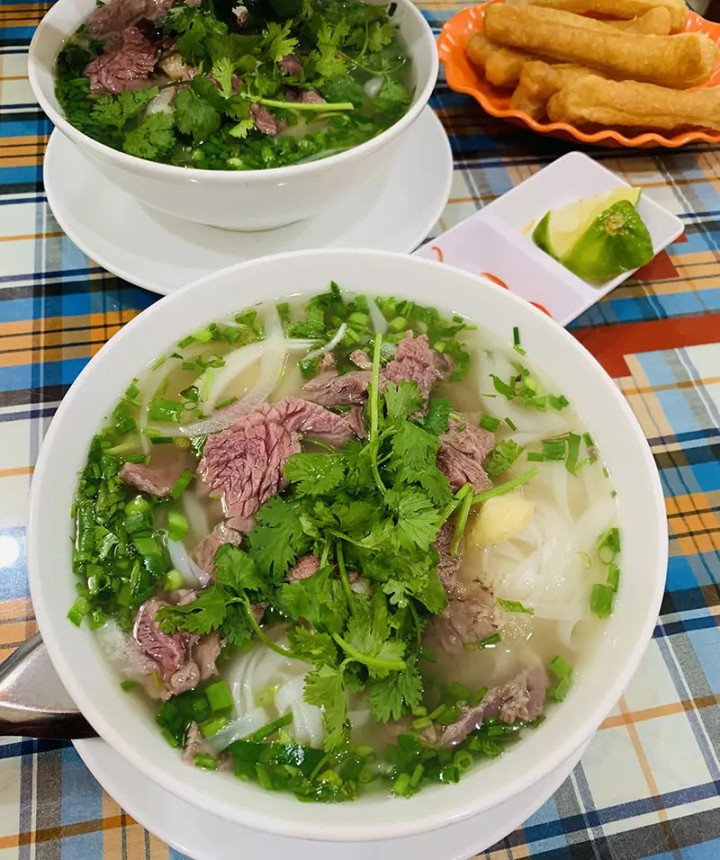
Vu Kim Hanh, chair of the High Quality Vietnamese Product Business Association, said at a workshop on ‘Standards and quality – the way that leads Vietnam to become a kitchen of the world’, that food consumption trends in the world have charged. People tend to pay higher attention to plant based food, which is good for health and convenient for their lives.
Thailand has been doing well to satisfy demand. It has instant durian soup which is ready to eat just after several minutes of reheating in microwave. It cooks durian with curry and shrimp which attracts diners, while Vietnam only sells fresh durian at VND25,000 per kilogram.
Thailand is also very good at marketing. The effects it can create with 10 dong on marketing are equal to Vietnamese spending of VND1,000.
This helped Thailand collect $33 billion from processed food exports in 2021.
Experts believe that Vietnam can also do this. Bui Thi Suong, deputy director of Vietnam Culinary Conservation, Research and Development Center, that Vietnamese dishes are very popular.
Suong, when running a tourism promotion program in Sweden, was asked by a television station program the similarities and differences between Vietnamese and Thai food. They were surprised as many restaurants sold Thai materials and spices, but Vietnamese food was difficult to find.
Under the program, her group prepared 36 dishes at a 5-star hotel in Sweden, enthusiastically responded to by people. People queued up at the pho stall to wait for their turn to be served with pho. A guest told her that it was his third bowl of pho.
When Suong went to the US, she felt surprised when seeing a bowl of pho three times bigger than usual. She realized that American people love pho, so they want big bowls.
A culinary expert said he once ran a food introduction program in India. The Vietnamese stall was always crowded. Thai officers visited the Vietnamese stall to enjoy food.
Vietnamese pride
Vietnam is a powerhouse in farm produce. It has a wide range of specialties and typical local dishes. However, as Chiem Thanh Long, director of the
Vietnam Culinary Conservation, Research and Development Centre, said, many people know pho, cha gio and bun cha and say the dishes are very good but Vietnam still doesn’t have big, famous brands.
He noted that many products are applauded in the world market, but do not ‘grow’ in the domestic market. He believes the problem lies in advertisements. In some cases, producers think their products are well known to all people, and there is no need to advertise.
“We have to popularize products from packaging to development, and even show how to process to have the best food. From this, Vietnam will have brands for its food,” he said.
Nguyen Quoc Toan, head of the Agro Processing and Market Development Authority, said that foreigners seek to eat Vietnamese food for experiences, while overseas Vietnamese seek Vietnamese food because of nostalgia.
Vietnam has many specialties and many Vietnamese still have not tasted all the specialties. So it is necessary to popularize Vietnamese food so that the food becomes a source of Vietnamese pride.
He agrees that Vietnam should learn a lot from Thailand, from street food culture to sales.
Regarding the food industry and agricultural economy in Vietnam, Pham Chi Lan, a respected economist, said farmers are upset about having to call on people to buy their products because of oversupply.
Lan hopes that Vietnam could become a kitchen of the world, but said that before doing so, it needs to be a kitchen for Vietnamese people. Then it would find it easier to sell products in the world market.
“You can reach out to the world market after you serve Vietnamese people well,” Lan said.
Experts all agree that Vietnam is weak at communication and marketing and needs to do this in a more methodical and professional way. It is necessary to take full advantage of social media to popularize products quickly. However, instead of saying ‘the minister has visited our business’, businesspeople should tell stories about their products.
Tam An